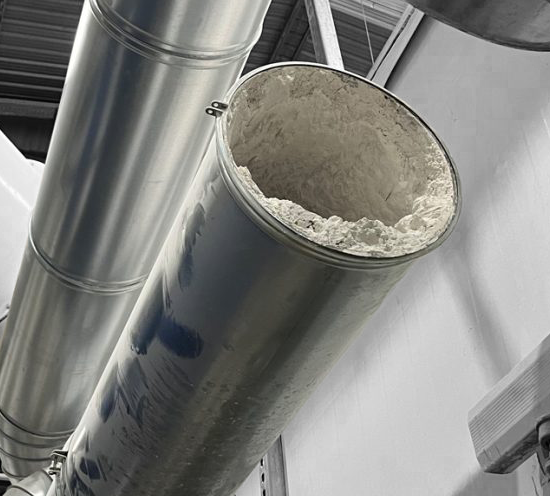
Industrial vacuuming
Industrial vacuuming is the first line of defense against dust, shavings, and hazardous particles
generated in production processes.

What is industrial vacuuming?
It consists of the localized capture of contaminants through extraction ports and their conveyance through pipes to a separator (cyclone, HEPA filter, silo, or inertial separator). A fan or turbine produces the necessary vacuum to transport the material, which is deposited in containers for recycling or safe disposal.
Controlled vacuum principle
By generating a constant negative pressure, the system captures particles at the point of emission, preventing their dispersion. Multi-stage filters retain up to 99.995% of particles ≥0.3µm, protecting both the operator and the machinery.
Advantages for the industry
- Reduction of breathable dust and improvement of indoor air quality.
- Prevention of ATEX explosions by removing combustible dusts (aluminum, sugar, wood).
- Decrease in manual cleaning time by 60%.
- Recovery of spilled raw materials and return to the process.
- Compliance with OSHA, NFPA, and Directive 2014/347UE regulations.

Step-by-step vacuuming process
1
LOCALIZED CAPTURE
Hoods or pipes extract dust and shavings at the source
2
PNEUMATIC TRANSPORT
Galvanized steel pipes convey the material to the separator
3
FILTERING AND SEPARATION
HEPA filters or sleeves capture fine particles; rotary valves discharge solids
Other industrial uses
- Cleaning of floors and equipment in pharmaceutical plants.
- Collection of waste and dust in paint booths
- Shaving vacuuming in milling machines and CNC lathes
- Extraction of welding fumes with articulated arms.
